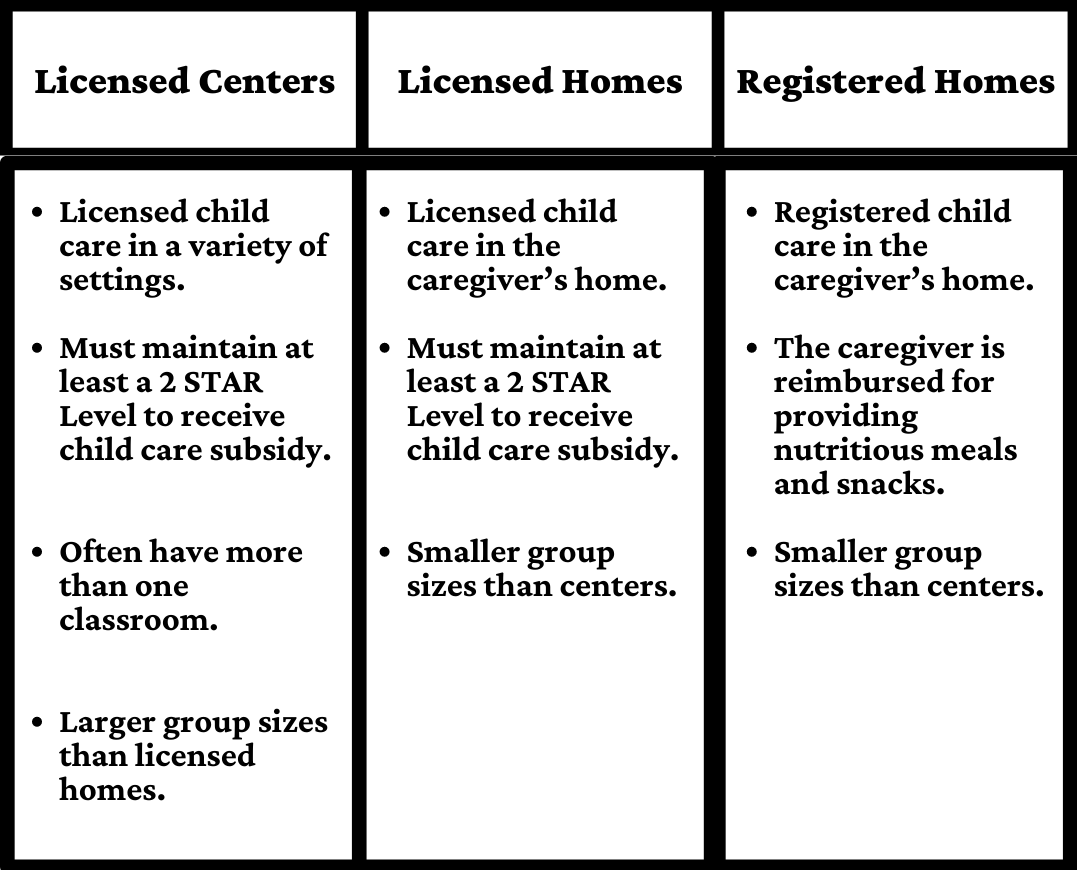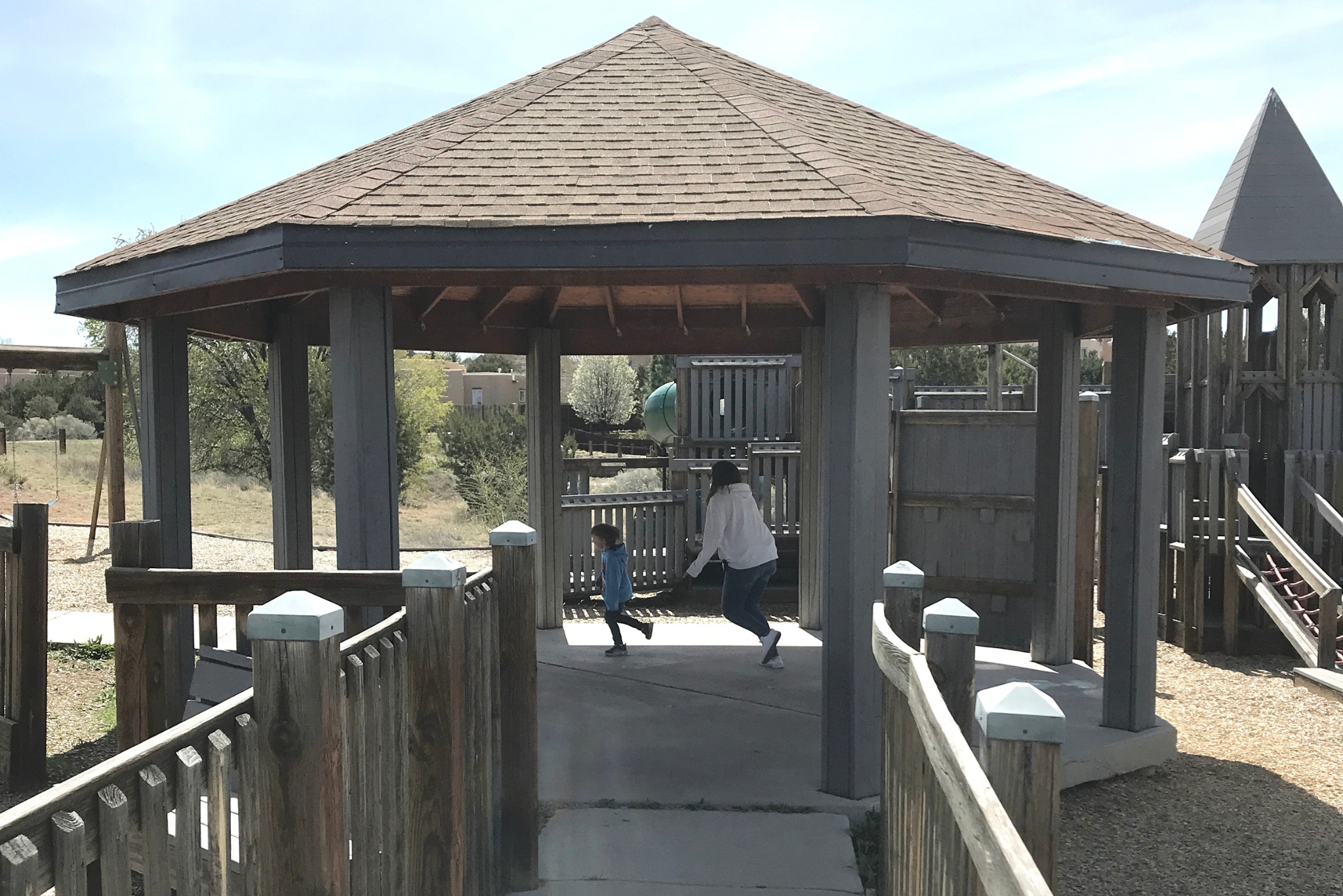Conversations in Castle Park
Part 2: Navigating Child Care and the Star System
By Annabelle Black Delfin
In recent decades, many more people have become aware of the important role that child care plays in a healthy and productive society, as well as the foundational benefits for children’s development. As a young mom in the nineties, I didn’t know much about child care, such as how to evaluate different programs. When my son and daughter were toddlers, I wasn’t ready for them to be in a school setting. Fortunately, I was able to find good care situations in licensed homes in Santa Fe. Later, my son transitioned to a wonderful child care center, but that decision was not informed by my understanding of what constitutes quality. Like many parents, I had to take into consideration the location of the center (especially in relation to my route to work), the cost, and whether there was an opening in my son’s age group. Luckily, the center was great. My son was really well cared for, learned a lot, and formed lasting friendships that continue to this day.
More recently, my daughter began looking for childcare for my granddaughter, who was born just before the pandemic. A great deal has changed since the nineties with the creation of the New Mexico Early Childhood Education and Care Department (NM ECECD) and the implementation of the FOCUS Tiered Quality Rating and Improvement System (FOCUS). Here is some basic information about how childcare is structured in New Mexico to help parents when making childcare decisions.
Background Information:
There are three main categories for licensed child care under the NM ECECD. Most licensed child care exists in the private sector (as opposed to the public schools), which means that the work conditions and wages are dependent on market forces as opposed to those mandated in statute for schools within the public sector. As we all know, high-quality child care is expensive, due in part to being open for more hours per week and more months per year than public school and having lower child-to-adult ratios than public school, which means more teachers and care providers employed by the program. Because the cost of high-quality child care is high, fewer can afford it and, in turn, providers may not offer what their community cannot afford. To address this, NM ECECD provides subsidy payments through the Child Care Assistance Program. This subsidizes the cost of child care for families at or below 400% of the federal poverty level. Subsidies encourage providers to offer more quality in their programs and widen access for more families to high-quality early childhood care and education.

- Early Head Start and Head Start are federally funded, but are considered licensed child care centers in NM.
- Out-of-school-time programs can be licensed and Child Care Assistance can be applied to this type of child care if the facility is licensed.
- Child Care Assistance cannot be applied to non-licensed child care.
STAR Levels
FOCUS (formerly called Look for the STARS or Aim High) is a quality rating and improvement system that contains five levels. The STAR Levels were created to help parents identify quality childcare programs, to encourage childcare programs to continue to improve their quality of care, and to recognize childcare programs that are improving their quality. As an incentive and acknowledgment that higher quality costs more, the reimbursement rate of Child Care Assistance increases as a program’s STAR level increases.
The higher the STAR level, the higher the level of quality. 1 STAR programs meet 1 STAR licensing requirement and do not receive childcare subsidies. There are very few of these programs in the state. 2 STAR programs meet basic licensing requirements for health and safety, but they are not required to include a defined educational component. It is not until a program gets to the 3 STAR level that the education component is required. At 3 STAR, programs begin to have more quality standards for teacher training and education, the classroom environment, daily learning activities, family involvement, and assessment of child development, as well as lower child-to-adult ratios and smaller group sizes. The 4 STAR and 5 STAR levels have successively increased quality requirements and require higher teacher and director credentialing, curriculum and assessment requirements, smaller groups, and lower ratios. A 5 STAR license indicates that the childcare program is accredited and has met the highest level of quality. The NM ECECD has a helpful chart that can be accessed for more details about the STAR ratings: nmececd.org/focus-tqris. The STAR level is listed on the childcare home or center’s license, which should be posted for parents to see.
It is interesting to note that higher quality levels center on lower child-to-adult ratios, which means more adults in the classroom interacting with children and building relationships, two things that research shows to foster language and cognitive development. This is in keeping with the developmental-interactive perspective of early childhood education and care that focuses on learning within relationships through play.
The New Mexico Early Childhood Education and Care Department (NM ECECD) recently launched a website to help parents and families locate child care: https://childcare.ececd.nm.gov/search. Additionally, parents can call New Mexico Kids Resource and Referral services at 1-800-691-9067 to speak to a specialist regarding specific placement needs. If a family wants more specific information about a licensed home or center, licensing survey inspection reports can be viewed here: bit.ly/3RLjO9K
Times have changed regarding early childhood education and care. Now that we have a department devoted to promoting access and quality in child care, there is a lot more information out there to help parents make decisions that work for their family. The NM ECECD has a great website with a section just for parents who are seeking more information about childcare and other services, such as home visiting, early intervention, and other topics.
Annabelle Black Delfin has spent her life in New Mexico. Since starting her first babysitting enterprise as a teen, she has been interested in how young children grow and develop. She has run after-school programs, summer camps, youth-service nonprofits, and child care, among other programs for kids in Santa Fe. Annabelle is a mom of two and has a three-year-old granddaughter. Annabelle is currently a researcher, writer, and instructor at the New Mexico Center of Excellence in Early Childhood Education of WNMU.




